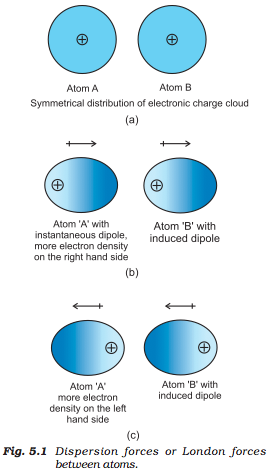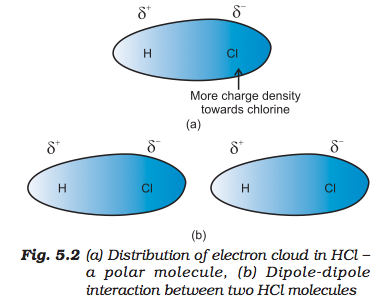Cards In This Set
| Front | Back |
|
What are the different types of Van Der Waal's forces?
|
Dispersion (or London) forces, dipole-dipole forces (including hydrogen bonds), and dipole-induced dipole forces
|
|
Which forces are not considered intermolecular forces?
|
Electrostatic forces (as between ions) or covalent bonds holding a molecule together
|
|
What are van der waal's forces?
|
Attractive intermolecular forces
|
|
What are ion-dipole forces? Are they Van der Waal's forces?
|
An attractive force between an ion and a dipole. These are not considered as van der waal's forces, as the intent of classifying van der waal's forces was to identify forces between molecules of the same type.
|
|
Describe, with a diagram, what's a London force?
|
 Temporary dipoles formed in otherwise nonpolar molecules or atoms. Caused by a temporary unsymmetrical electrical charge inducing a dipole on a neighboring atom or molecule. Also called dispersion force. These forces are always attractive. |
|
What is the range and power of dispersion (London) forces?
|
Interaction energy proportional to 1/r^6, range ~ 500 pm. Magnitude depends on the polarisability of the atom or molecules.
|
|
Describe, with a diagram, dipole-dipole forces
|
 Between molecules w/ permanent dipole. Partial charges at the ends always less than unit electronic charge. |
|
What is the difference in interaction energy of dipole-dipole forces in solids vs liquids?
|
Solids typically have stationary polar molecules, with i.e. varying 1/r^3, while rotating polar molecules vary 1/r^6.
|
|
Both ICl and Br2 have the same number of atoms and approximately the same molecular weight, but ICl is a solid whereas Br2 is a liquid at 0oC. Why?
|
Intermolecular dipole-dipole attractions between ICl molecules are sufficient to cause them to form a solid at 0oC, whereas the intermolecular attractions between nonpolar Br2 molecules are not. (from /gchelp/liquids/dipdip.html)
|



